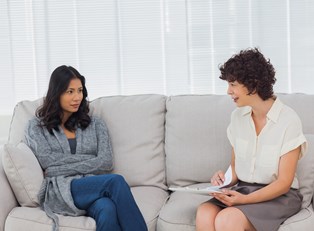Social anxiety is a debilitating condition that’s estimated to affect up to 18% of all Americans. Most generally, the condition refers to a pervading sense of dread in social situations, but this problem is manifested differently for each person. While it’s true that, to a certain extent, anxiety is a normal part of life, severe social anxiety moves beyond that and makes it difficult for sufferers to function in common, everyday situations. Here’s a general look at this condition—including its symptoms, diagnosis, and treatment.
The Symptoms of Social Anxiety
The most common symptoms associated with social anxiety are psychological. These include intense feelings of dread in most social situations, an irrational fear of judgment from others, and the inability to cope with common scenarios such as making a phone call, giving a presentation, or interacting with a cashier. However, social anxiety often produces physical symptoms as well. These include muscle tension that may lead to headaches, nausea, diarrhea, heavy perspiration, and uncontrollable shaking.
The Diagnosis of Social Anxiety
Some forms of social anxiety are known as “nonclinical”—which means they are not particularly severe or officially diagnosed. These include things like stage fright and performance anxiety. However, when it is officially diagnosed, this condition is known as social anxiety disorder (SAD) and its criteria are regulated by the Diagnostic and Statistical Manual of Mental Disorders (DSM) produced by the American Psychiatric Association. The DSM states that social anxiety disorder is marked by a persistent fear of social performance for six months or longer.
The Treatment of Social Anxiety
Luckily, there are several effective options available for the treatment of this condition. One of the most common methods is the use of cognitive behavioral therapy by a mental health professional. Cognitive behavioral therapy focuses on exposing the irrational impulses and thought patterns that sustain social anxiety and replacing them with more rational, reality-based approaches.
Additionally, patients can help increase the chance for recovery by implementing some strategies at home. These include practicing breathing and other relaxation techniques and eliminating caffeine to reduce the physical symptoms of anxiety. In extreme cases, medication may be necessary to treat this condition. However, it’s important to remember that this should be seen as a back-up plan if other methods of treatment prove to be ineffective.



